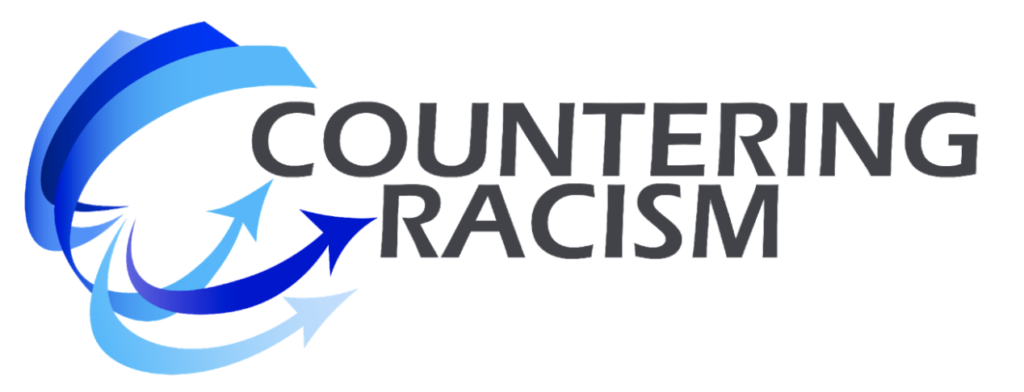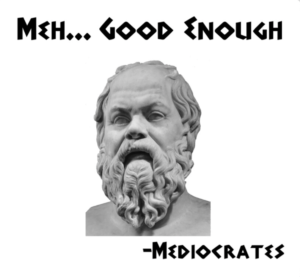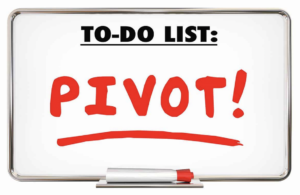Diversity, Equity and Inclusion Initiatives
DEI BACKGROUND
- Business Benefits
- History – EEOC to Affirmative Action to DEI
- Two Distinct Leadership Phases
- Why Two Phases?
- 2 Critical Questions
- Downloadable PDF and Action Template
- Making the “Leadership Pivot”
- Downloadable PDF and Action Template
The 3 Dangerous Pitfalls Facing the C-Suite
- Pitfall #1 – “Game Over” – The C-Suite Delegates too Much Responsibility too Quickly & Disengages
- Pitfall #2 – The Deceptive One – Failure to Integrate DEI and Change Leadership Expertise – Lack of Synergy
- Pitfall #3 – The Surprising One – Leadership Fails to Make the Pivot from Phase I to Phase II Leadership
DEI Background
What is DEI?
DEI started out as D – Diversity. As people got more experience with diversity they realized that diversity was only a part of the story and Equity and Inclusion were added. It is now understood that it is the integration of diversity, equity and inclusion that makes a difference.
Diversity
Diversity is the variety of people within an organization. Variety can refer to a wide range of characteristics, for example race, ethnicity, gender, socio-economic background, religion, sexual orientation, style and preferences, etc.
Equity is about eliminating systemic barriers and privileges, and ensuring all people have fair access, opportunity, resources, and power to thrive. Equity acknowledges that not all people are starting from the same place due to historic and current systems of oppression. It is the commitment to provide different levels of support based on the needs of individuals or groups to achieve fairness in outcomes.
Inclusion
Inclusion is about creating an environment that is welcoming to all people – a workplace where everyone is valued, respected, fully integrated, and able to reach their full potential.
Business Benefits
There is an increasing body of research that shows significant benefits for companies that are successful in DEI initiatives. Firms such as McKinsey, Harvard Business Review (HBR), and Deloitte have surveyed several thousand firms multiple times with consistent results. The field of DEI is still young, so there is plenty of room for more research.
The early results, however, are strong enough to demonstrate a significant return on investment for DEI initiatives. For example, Deloitte compared firms in the top and bottom quartiles of inclusivity and found that those in the top quartile were:
- 2 times as likely to meet financial targets
- 3 times as likely to be high performing
- 6 times as likely to be innovative and agile
Among the outcomes found by McKinsey:
- Companies in the top quartile for gender diversity on their executive team were 21% more likely outperform their industry national median on EBIT margin.
- In terms of ethnic cultural diversity, the top quartile firms were 33% more likely to be profitable.
- the top quartile for ethnic and racial diversity in management were 35% more likely to have financial returns above their industry mean, and those in the top quartile for gender diversity were 15% more likely to have returns above the industry mean.
HBR surveyed 1700 companies across 8 countries and found that there was a statistically significant relationship between diversity and innovation as well as profitability outcomes in all countries examined
Basically, not only do stronger DEI initiatives provide an advantage in the talent wars, they also provide advantages in innovation as well as financial performance. The likelihood of a good ROI for successful DEI initiatives is high.
History – EEOC to Affirmative Action to DEI
DEI has gone through several phases and it’s important to see the development over time. A lot of has gone into getting to the point we are at right now. There has been progress and there have been setbacks and disappointments. The key is to build on what has evolved to date and persevere in fully realizing the promise of DEI.
1961- As President JFK issued an executive order to engage in what he called “affirmative action” to counter discrimination.
1964 – The Civil Rights Act made it illegal to discriminate in a range of actions. The act also created the U.S. Equal Employment Opportunity Commission to enforce it. The original basis in the act for discrimination of race, color, religion, sex, or national origin has since been expanded to include pregnancy, sexual orientation, and gender identity. It has been met with compliance as well as opposition, particularly the charge of reverse discrimination and stigmatizing the beneficiaries.
1980s – Ronald Reagan opposed and curtailed government involvement, but most large companies continued on the path. Changes in demographic projections added a business benefit component, as the number of white men expected to join the workforce was inadequate. “Compliance” was joined by “Diversity Management” as the business case started to emerge.
2000s – Despite significant efforts progress has been spotty. Diversity has increased at the lower levels of organizations, but it is thin at the upper levels – and some industries are well behind.
As the business case (the “return on investment” or ROI) has become more important the issues of equity, and particularly inclusion, have become more visible as they are key to realizing the potential benefits of diversity. Hence DEI. Perseverance remains the key as the pattern of progress followed by flattening or sliding back continues.
The Two Distinct Leadership Phases - This is "Make-or-Break"
It is very easy to end up pursuing mediocrity in Diversity, Equity, and Inclusion initiatives. That is because they are tough complex challenges that operate at the individual, group, organizational, and cultural levels. To avoid the pursuit of mediocrity requires leading DEI initiatives in at least two distinct phases – each with their own challenges and leadership requirements. Leadership must make a pivot from Phase I to Phase II or the initiative naturally loses direction, momentum, and value.
Phase I – Design and Launch
In Phase I to avoid the path to mediocrity the C-Suite must answer two key questions and avoid one dangerous pitfall. The C-Suite must correctly answer the questions “Why are we doing this?” and “How are we going to do this?”” The C-Suite must also avoid the temptation to delegate too much responsibility too quickly – abdicating leadership. Courage and discipline are the core qualities required.
Phase II – Persevere – “Drive it Home”
In Phase II the C-Suite must pivot to find the leverage to “drive it home” and actually achieve the desired outcomes. This involves a shift in who leads, how they lead and the discipline to focus on where the leverage is to complete the journey. Perseverance, resilience, and discipline are the core qualities required.
Why Two Leadership Phases?
- The Performance “Needles” Will Simply Not Move a Lot in Phase I (this is natural and to be expected)
- It’s Tough to Generate Many of the Business Benefits in Phase I and HR Oriented Outcomes are Still Vulnerable
- Leadership and DEI Credibility Take a Major Hit Without a Phase II Pivot
- The Points of Leverage for Leadership Naturally Change, so Leadership Focus Needs to “Pivot”
- The Locus of Leadership and Ownership for DEI Must Change
The Good News – the transition from Phase I to Phase II can be seamless. Although the challenges are significantly different, the core leadership roles and strategies are relevant for both phases. They need to be revised to fit the challenges of Phase II, but radical shifts or disruption is not necessary.
Phase I Leadership - Design and Launch
The Two Critical Questions
To avoid the pursuit of mediocrity requires answering two critical questions in Phase I and avoiding the dangerous pitfall in that phase.
Question #1 – Why engage in a DEI initiative?
Identifying the complete return on investment (ROI) to be achieved – the foundation for the initiative
Question #2 – How do we lead the required changes?
10 Critical Success factors (CSFs) for leading Phase I
Phase I Leadership Theme
“Create the right design and launch the initiative effectively.”
This is the classic change leadership phase where the case is made for change, the vision is created, the organizational design elements are defined, the leadership structure is put in place, and plans for guiding the change are created. Executive leadership is the critical leadership level and the focus is enterprise-wide.
Phase I Leadership Prime Goal
“Engage people and move the needles.”
This is the phase where people are engaged and aligned on direction, momentum is created, and initial outcomes are achieved.
Ten Critical Success Factors (CSFs) for Leading Phase I
DEI initiatives are organizational change initiatives. Ten CSFs for leading change are essential.
Phase II Leadership - Pivot to "Drive it Home"
Phase II is different than Phase I because the challenges change significantly as DEI initiatives roll out. That requires a leadership pivot to meet the challenges. Phase II builds on and complements Phase I.
Phase II does not require new core change leadership roles and strategies. It’s important to review and revise the leadership roles strategies established in Phase I to generate energy and reinforce direction, but significant disruption is usually not required and hand-offs can be seamless.

Phase II Theme
“Hold the course and drive it home.”
Phase I will have set the direction along with the core strategies and tactics. It will also have engaged people, generated the initial energy, and achieved the early outcomes. Phase II must assess where the organization is on the path and what leadership must do to ensure success as plans meet reality.
Phase II Prime Goal
“Maintain direction and energy and continue to move the needles.”
Phase I will realize some of the desired outcomes, but it can only “move the needles” so far. Phase II must focus on the leverage to continue to move the needles, with a likely focus on the tougher business-oriented goals, such as innovation, market penetration, team-work, cross-boundary collaboration, etc.
NOTE. Phase II also ensures that leadership “aligns” the “things” of the organization (strategy, structure, policies, processes, etc.), which can be done relatively quickly – and that it “attunes” the people (beliefs, values, perspectives, habits, behaviors, etc.), which takes a much longer time.
Seven Areas of Critical Phase II Leadership Focus
As with Phase I, there are a limited number of areas of leadership leverage on which to focus. These are key for both leadership effectiveness and leadership efficiency.
Note. In the downloadable PDF the areas of leadership focus in Phase I and Phase II are compared.
The 3 Dangerous Pitfalls Facing the C-Suite
Effective DEI leadership is always about leverage – the critical success factors (CSFs) on which to focus and the dangerous pitfalls to avoid. The sections on leading Phases I and II focus on the CSFs for each phase. This section focuses on natural, and very dangerous, pitfalls that must be avoided by C-Suites in leading diversity initiatives. These pitfalls are a natural part of the territory. If addressed directly they can be avoided.
Pitfall #1 – “Game Over” – The C-Suite Delegates too Much
Responsibility too Quickly & Disengages
In Phase I of most DEI initiatives the C-Suite makes the fatal mistake of delegating too much responsibility for DEI success too fast. Responsibility is often delegated to a Chief Diversity Officer, Human Resources, a Diversity Council, etc. Even when the C-Suite supports those with the responsibility for DEI initiatives, the damage has been done. DEI must be led on an individual, group, systemic, and cultural level and the challenges on each level are exceptional. The C-Suite must be – and be perceived to be – the owners of the initiative and those who will be out-front leading. No one else has the leadership leverage.
“When the C-Suite wiggles, everyone else gets whiplash.”
The Three “Guardians of the Threshold” & Modeling the Way. The three critical challenges to C-Suite leadership are right at the beginning of the DEI journey and can take the C-Suite out of the game if they aren’t dealt with directly. These challenges are the three “guardians of the threshold” that appear at the beginning of journeys of change and test leaders about their readiness and commitment to lead. The power of the three that confront the C-Suite in DEI initiatives are a good example of how DEI initiatives are different – particularly the psychological challenges they bring.
The good news is that all three of these guardians can be dealt with directly and that provides the C-Suite with an opportunity to model a confident “no fear” approach to DEI. Everyone watches to see how the C-Suite will respond to the challenges of DEI and these early challenges are an opportunity to build the credibility of both the C-Suite and the DEI initiative. This is the chance for the C-Suite to very clearly “model the way” for everyone.
The Three “Guardians of the Threshold”:
(1) The sense of indictment that comes unbidden with DEI challenges;
(2) The exceptional degree of unknown that comes with DEI initiatives as well as a range of potential losses (real or imagined);
(3) The specter of incompetence that DEI presents. They are called the “guardians of the threshold” and they are the first tests on a journey of change. They are particularly powerful with race as a topic.
Fortunately, there are very direct strategies for dealing with each of the guardians. These three guardians will challenge everyone, so it is critical for the C-Suite to model a confident “no fear” approach to dealing with them.
DEI initiatives require strong early transparent C-Suite leadership that models for people what is expected and required – and that the challenges of DEI initiatives can be overcome. If the C-Suite shies from taking on these guardians and committing to lead, the organization or community is almost certainly on a path to mediocrity.
Pitfall #2 – The Deceptive One – Failure to Integrate DEI
and Change Leadership Expertise – Lack of Synergy
DEI initiatives are different than most change initiatives, but they are still organizational or community change challenges on individual, group/team, systemic, and environmental/community levels. To achieve excellence, leadership must integrate the experience and capabilities of those with DEI expertise and those with organizational or community change expertise (both internal and external resources). Failure to do so leads naturally to mediocrity because both forms of expertise are required for success.
Phase I needs to be focused on, and heavily weighted toward, DEI and DEI expertise. It will naturally rest on a foundation of organizational or community change, but DEI initiatives really are different than other initiatives and require deep DEI capability – particularly in the beginning of Phase I.
In Phase II the balance naturally changes and organizational or community change expertise becomes increasingly important. Although the balance must naturally change, DEI expertise must always be a significant part of the journey. DEI initiatives require that capability end-to-end.
Pitfall #3 – The Surprising One – Leadership Fails to Make the Pivot
from Phase I to Phase II Leadership
There is a reason that Phase I and Phase II each have their own section. The DEI journey simply presents different challenges at different parts of the journey and leadership must pivot to match the challenges.
Phase I of a diversity initiative will only take the organization so far, regardless of how long it lasts or how well it’s done. Even the best led Phase I will run its course and energy and outcomes will flatten over time. Progress will be made – the needles will move – but many of the desired outcomes will remain out of reach. This is particularly true for the tougher goals.
That doesn’t mean that leadership failed in Phase I. It just means that the challenge has changed in significant ways, and that leadership needs to pivot to continue effectively on the path. At some point on the journey, energy will begin to flatten out or wane, people’s attention will start to focus elsewhere, progress will slow, etc. That is natural and not an indicator that leadership is ineffective. Leadership will, however, rapidly become ineffective if it doesn’t pivot for Phase II.






